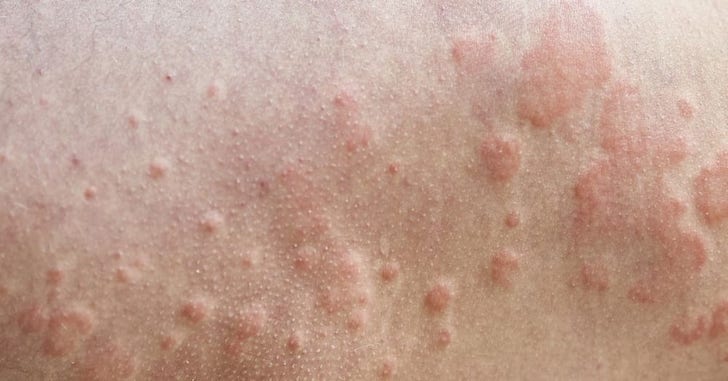
Red spots on the skin. The skin manifestations in psoriasis can take several distinct forms, each with its own set of visual characteristics. In the most common type, known as plaque psoriasis, the affected areas typically appear as raised, red patches covered with a buildup of silvery-white scales. These patches often begin as smaller, flat or slightly elevated spots that gradually expand and thicken over time. They most frequently develop on areas of the body that experience frequent pressure or friction, such as the elbows, knees, lower back, and scalp. A characteristic pattern of distribution is their tendency to appear symmetrically on both sides of the body, though they can potentially occur on any skin surface.
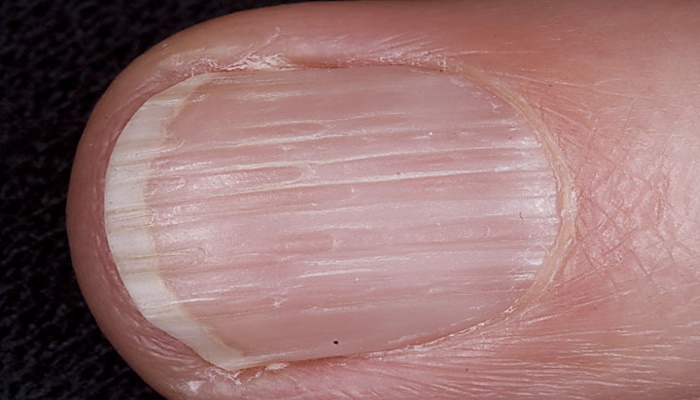
Change in the structure of the nail plate. The nails can show a variety of physical alterations that are often visible to the naked eye. These changes can include small, pinpoint depressions or pits on the nail surface, giving it a textured, uneven appearance similar to the surface of a thimble. Discoloration is common, with nails developing yellowish or brownish spots, and the nail plate may become noticeably thicker. In some cases, the nail may loosen and separate from its bed, a condition that typically starts at the tip and progresses backward. These modifications are the result of the same underlying skin cell lifecycle disruption that affects the rest of the skin.
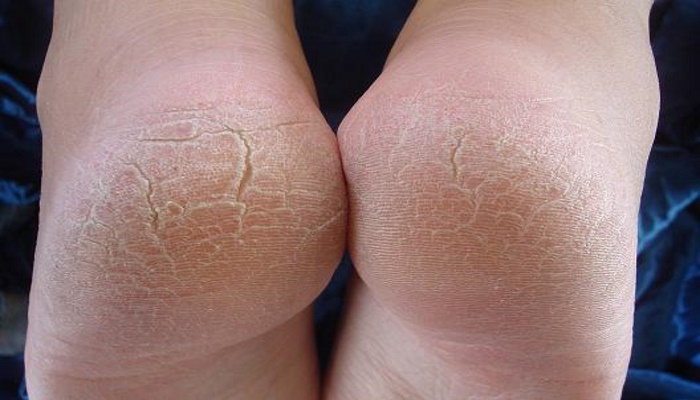
Dryness of the skin. The affected skin areas are characterized by significant dryness and a lack of natural moisture. This often creates a sensation of tightness and discomfort, particularly around movable joints like the elbows and knees, as well as on the face and scalp. The dryness is not confined to these areas alone and can appear on any part of the body. In these dry zones, the skin develops distinct, well-defined rashes that are slightly raised above the surrounding healthy skin. A key feature is the formation of flaky scales on the surface of these rashes, which are part of the skin’s accelerated cell production process.
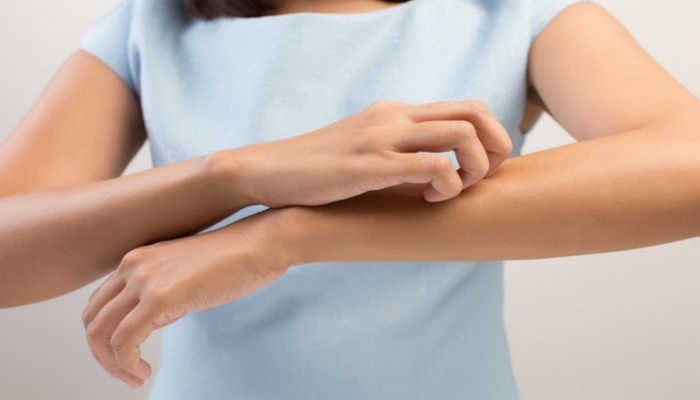
Itching and Blisters on the skin. Itching is a frequently reported sensation that can range from mild to intensely bothersome. The urge to scratch can be triggered or worsened by various factors, including the use of certain skincare products, environmental conditions, or the body’s own inflammatory response. In a specific and less common variant called pustular psoriasis, the skin develops raised bumps filled with a whitish fluid. These distinctive skin manifestations appear primarily on the extremities, particularly the palms of the hands and soles of the feet, and are characterized by their red bases with visible white centers.
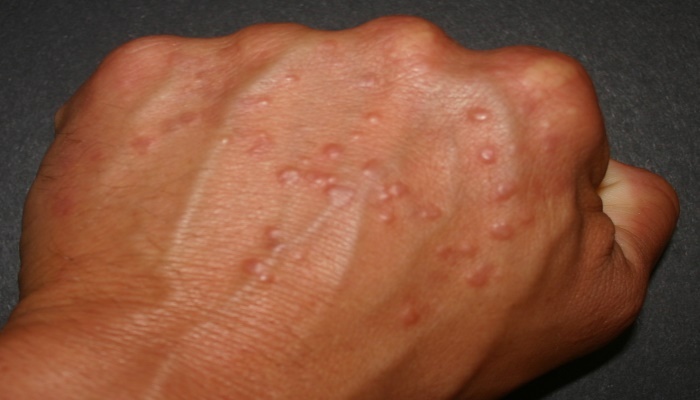
Scaling spots. This presentation is characteristic of plaque psoriasis, one of the most prevalent forms of the condition. The development of these spots usually follows a gradual progression, though in some instances they may appear more suddenly. The initial signs typically include the emergence of pink or reddened bumps or patches on the skin’s surface. These spots evolve into dense, well-defined raised areas that are noticeably elevated above the surrounding healthy skin. Their surface becomes covered with layers of greyish or silvery-white scales that may not be immediately visible on all spots but become apparent upon close examination.

Bleeding and cracked skin. When the skin becomes severely dry and loses its natural elasticity, it becomes vulnerable to cracking and fissuring. This is particularly common in areas where the skin is already affected by patches and is subject to movement, such as around the hairline, neck, and over joints. The cracks can vary in depth, and when they extend into the deeper skin layers, minor bleeding may occur. This bleeding typically appears as small pinpoint spots and indicates a compromise in the skin’s protective barrier function, which can lead to further discomfort.

Swollen joints. The inflammatory process associated with the condition is not limited to the skin alone and can extend to affect various joints throughout the body. This can result in noticeable swelling, stiffness, and discomfort in the affected joints, which may feel tender to the touch. The swelling can make joint movement feel restricted or difficult, particularly after periods of inactivity. This aspect represents a specific focus of the condition that involves both the skin and the musculoskeletal system, affecting mobility and comfort.

Scalp dryness and itching. The scalp is a commonly affected area where symptoms can be particularly noticeable. Individuals often experience significant dryness accompanied by persistent itching that can range from mild to severe. In the initial stages, the presentation might resemble common dandruff but is typically characterized by more intense redness and thicker scaling. When more pronounced symptoms develop, such as the formation of raised bumps or more extensive rashes, the approach to managing the condition may need to be adjusted to address the specific needs of the scalp skin.
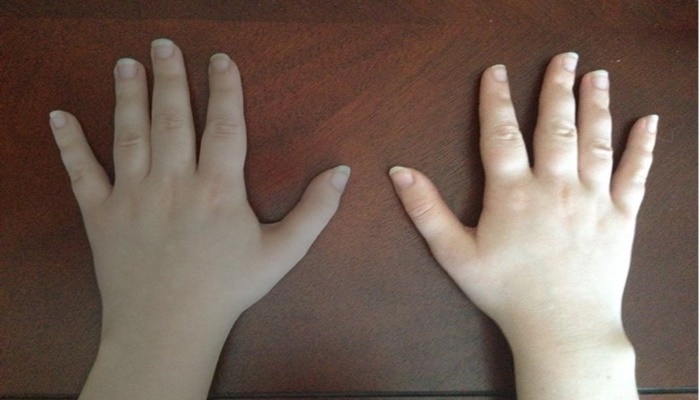
Silver skin tone. In affected skin areas, the rapid production of new skin cells leads to a substantial accumulation of cells on the surface that haven’t shed normally. This buildup creates a thickened, hardened texture and gives the skin a distinctive silvery or whitish appearance. The silvery quality is most noticeable on the thickest patches and represents the visible accumulation of scale on the skin’s surface. This characteristic appearance results from the way light reflects off the multiple layers of built-up skin cells that define the most common type of this skin condition.
Learn more about psoriasis at NIH.gov.


